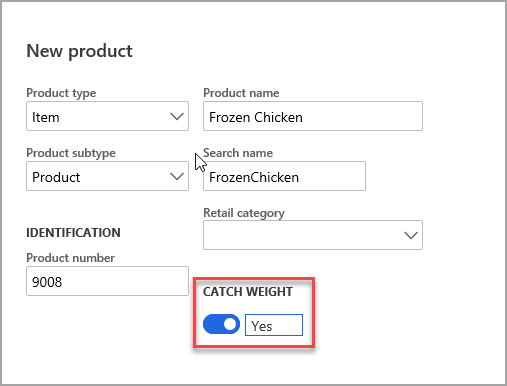Process manufacturing item types
Dynamics 365 Supply Chain Management supports multiple item types, including formula and catch weight.
Formula items
In Supply Chain Management, the items that are produced (semi-finished or finished) in process manufacturing are called formula items:
Formula items are produced from a series of mixing operations, chemical reactions, extraction, or other actions that transform raw materials into a final, sellable product.
A formula item might be produced with coproducts and by-products.
The formula item is produced in specific sizes, called batch sizes, and can be tracked with a batch number.
Yield will cause the ingredient quantities to differ to achieve the planned output of the formula item.
Catch weight items
Certain items, when you are buying or selling them, need to be weighed, such as watermelon, meat, or diamonds. In that scenario, the price is determined by the weight of the item.
These types of items are known as catch weight items, and you can buy or sell the items in one unit such as a bag, box, pcs., or each. However, you will measure the price and inventory units of the item by a unit that measures weight such as kilograms (kg) or pounds (lbs).
Catch weight items are defined as a catch weight item at the global level when the product is created. All enterprises that use that product must use the catch weight functionality.
Product information management > Products > Products > New

Catch weight-related setup
When you enable the CW product check box at the global level and release it to individual companies, you must perform catch weight setup on the item, including the following tasks:
Create the unit conversion data between the base unit and the catch weight unit.
Assign the catch weight unit of measure to the item.
Enter the Minimum quantity and Maximum quantity fields in the Catch weight field group.
Set the Tracking Dimension Group.
Select a tracking dimension group with the selection of Batch active if you want to track a batch number or a shelf life.
Full or partial visibility
The dimension configuration and weight that you set up for a catch weight product determines whether the item uses full or partial visibility.
Catch weight items that use full visibility - Require that the inventory quantity be known for each catch weight unit. For example, assume that shrimp is sold in boxes and the customer requires that each box has a unique identification and a known weight. In this example, the item number for the boxes of shrimp should be created as a catch weight item that uses full visibility. You can create catch weight items that use full visibility if you assign a unique serial number to each catch weight unit.
Catch weight items that use partial visibility - Require that the inventory quantity be known for batches of items that use a catch weight unit. For example, assume that a company receives a batch of 100 boxes of shrimp with a nominal weight of 10 kilograms. Because all the boxes belong to the same batch, they all use the same batch number. Each box can vary in weight; therefore, the whole batch of boxes is weighed. The number of boxes and their total weight can be registered in a single transaction.